Climate Action Plan
Climate Action Plan
Boroondara’s Climate Action Plan helps us deliver what’s important to our community. We know that climate change is a real and growing threat to our environment, health and wellbeing. We also recognise the threat to our quality of life now and into the future.
Watch the Climate Action Plan launch webinar.
You can track our progress at our Climate Action Plan Hub.
Our vision
Our vision is that everyone who lives, works and plays in Boroondara will come together to achieve our goals. We want to:
- support and encourage the use of renewable energy and sustainable materials
- change the way we travel to use greener alternatives
- save our valuable drinking water
- use our valuable resources well and recycle as much as possible
- be ready to adapt to new technologies that’ll help us achieve our goals.
We’ll continue to lead our community and work with other councils, agencies and groups to reduce emissions and be carbon-neutral by 2035.
Download the full Climate Action Plan, implementation plan and research report below.
Table of contents
What we've done so far
What we've done so far
We have policies, projects and other initiatives that make sure our operations and services are environmentally sustainable.
Our strategies
The Boroondara Community Plan 2017– 2027 (BCP) is our main strategic document. It guides our decisions and supports our annual plans and budgets. It also supports all of our strategies, policies and actions.
Within the BCP, there are 7 priority themes. A number of these themes guide our response to climate change and environmental sustainability.
The BCP also includes the Boroondara Public Health and Wellbeing Plan. This plan recognises the potential effects of climate change. It’s required under the Victorian Government Climate Change Act 2017.
We have policies and strategies that help us meet the objectives of the BCP. The Climate Action Plan replaces Our Low Carbon Future Strategy (2009–2020).
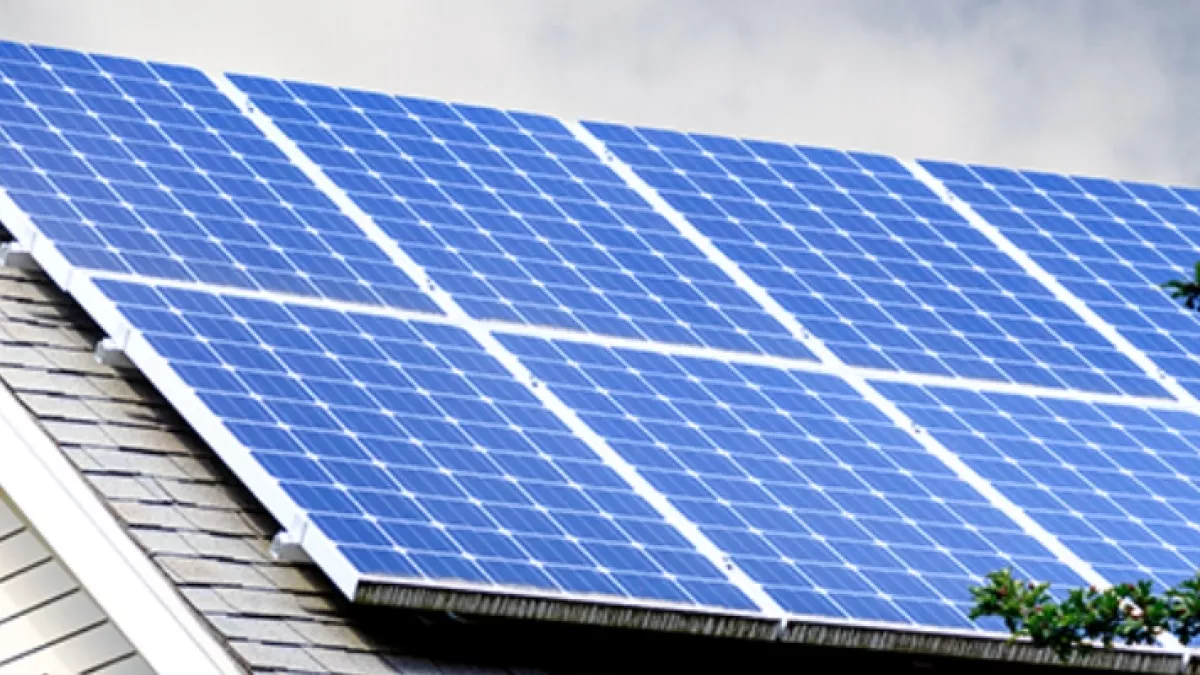
Our projects
Actions from Our Low Carbon Future Strategy focused on tackling key sources of greenhouse gas emissions from our buildings, streetlights and vehicles.
We have made great progress in increasing the energy efficiency and low carbon technology in the buildings we own. Examples of our efforts include:
- We are powering more than 12,000 streetlights and 16 major buildings with 100% local renewable energy from a Gippsland wind farm. We will be doing this until 2030. This makes up over 85% of our total electricity use.
- We have upgraded over 7,000 streetlights with more efficient technology.
- We are installing solar panels on our buildings. This includes on our 4 aquatic centres. By June 2021, we had installed, or had committed to, over 1,133 kW of solar PV (energy captured from the solar panels) on all our office, depot and community buildings.
- We are delivering cost-effective energy efficiency upgrades at our largest buildings. Our recently completed $2.5 million project Energy Performance Contract (EPC) project is now saving 1,700 tonnes of CO2-e per year. It is also saving over $250,000 each year.
- During 2020–21, we used what we learned from the EPC project and put in place over $1 million in extra energy-saving initiatives.
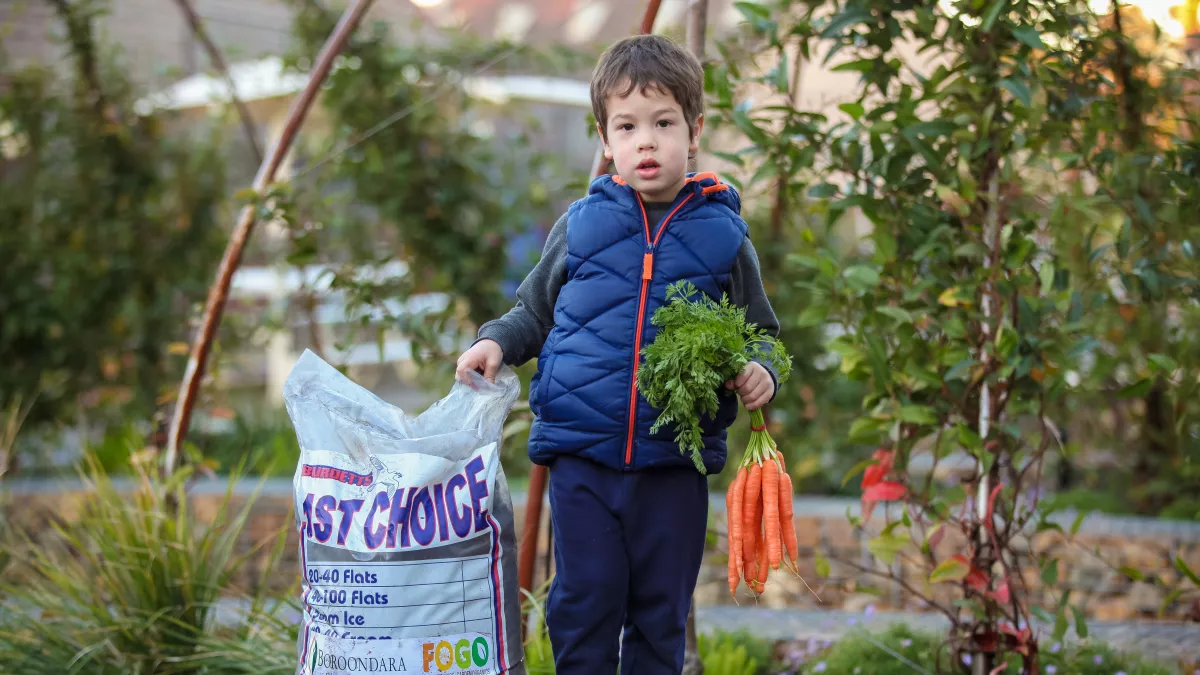
Other initiatives
We run other projects and programs that support environmental sustainability within Council and the wider community. Key initiatives include:
- launch of the Food Organics Garden Organics (FOGO) program in May 2020 to keep food and garden organics out of landfill (one of the biggest changes in community waste management since kerbside recycling)
- Council Climate Change Risk Assessment (2020)
- Sustainable Buildings Policy (2016) to make sure all new or upgraded buildings are environmentally sustainable and all Council building projects get at least a 5-star standard in the Green Building Council of Australia’s rating system
- Living for our Future program to help teach our community about energy efficiency and other sustainability issues
- providing the latest energy efficiency and renewable energy advice to residents and businesses through the Australian Energy Foundation
- Our Compost Revolution program offers advice and discounts for residents on products such as worm farms and compost bin
- the Teacher Environment Network program to help schools to include sustainability in their curriculum and in the way they work
- building roads using recycled asphalt, which includes materials such as recycled soft plastic bags, glass and leftover cartridge toners; and reusing asphalt recovered from our other road projects
- being a member of the Eastern Alliance for Greenhouse Action to deliver programs that reduce greenhouse gas emissions and support our community to adapt to climate change with other eastern suburbs councils.
Pagination links
Community consultation
Community consultation
In 2020, we consulted with our community on the Climate Action Plan.
During the first phase of the consultation, we heard from more than 1,500 community members. We randomly selected one-third of these community members to take part. In 2021, the second phase of the consultation told us we were mostly on the right track. We found out that our community supports us in taking bold steps to reduce our impact on climate change. You can find out more about the consultation process in our research report.
We also considered community feedback from the Boroondara Community Plan refresh consultation.
Other considerations in developing the plan
Our Climate Action Plan aims to help the City of Boroondara find the best ways to reduce emissions and be more sustainable.
When we developed this plan, we looked at:
- community feedback
- how our operations contribute to greenhouse gas emissions
- how the Boroondara community contributes to greenhouse gas emissions
- how climate change is connected to other environmental issues, such as biodiversity and water availability
- other ways we can help reduce the effects of climate change outside our own operations
- how much we need to reduce emissions to avoid the worst effects of climate change
- what data we have available to track and report on how well we're doing
- what data we aren’t able to collect.

Pagination links
Emissions in Boroondara
Emissions in Boroondara
Council emissions
We started recording our emissions in 2007–08. We call this our baseline year. In our baseline year, the emissions were 26,837 tonnes of CO2-e. Since then, we’ve checked greenhouse gas emissions across all the buildings and services we manage.
Due to ongoing efforts to reduce greenhouse gas emissions and environmental footprint, our emissions are now below 6,000 tonnes CO2-e. This is over 80% less than our baseline year and is more than the target set in Our Low Carbon Future Strategy, which was 30–40%.
Though this is a great effort, data shows that Council’s emissions make up less than 1% of emissions in Boroondara. We still have a big role to play in helping our community reduce greenhouse gas emissions in Boroondara.
Council emissions by source
- Electricity in buildings makes up 46% of emissions.
- Electricity for streetlights makes up 28% of emissions.
- Gas for buildings makes up 10% of emissions.
- Fuel for vehicles makes up 8% of emissions.
- Indirect greenhouse gas emissions makes up 7% of emissions.
- Taxi and air travel makes up less than 0.1% of emissions.
- Refrigerants makes up 1% of emissions.
Renewable electricity doesn’t contribute to our total greenhouse emissions. As of 2021, all streetlight electricity is renewable. Over 90% of building electricity is also renewable.
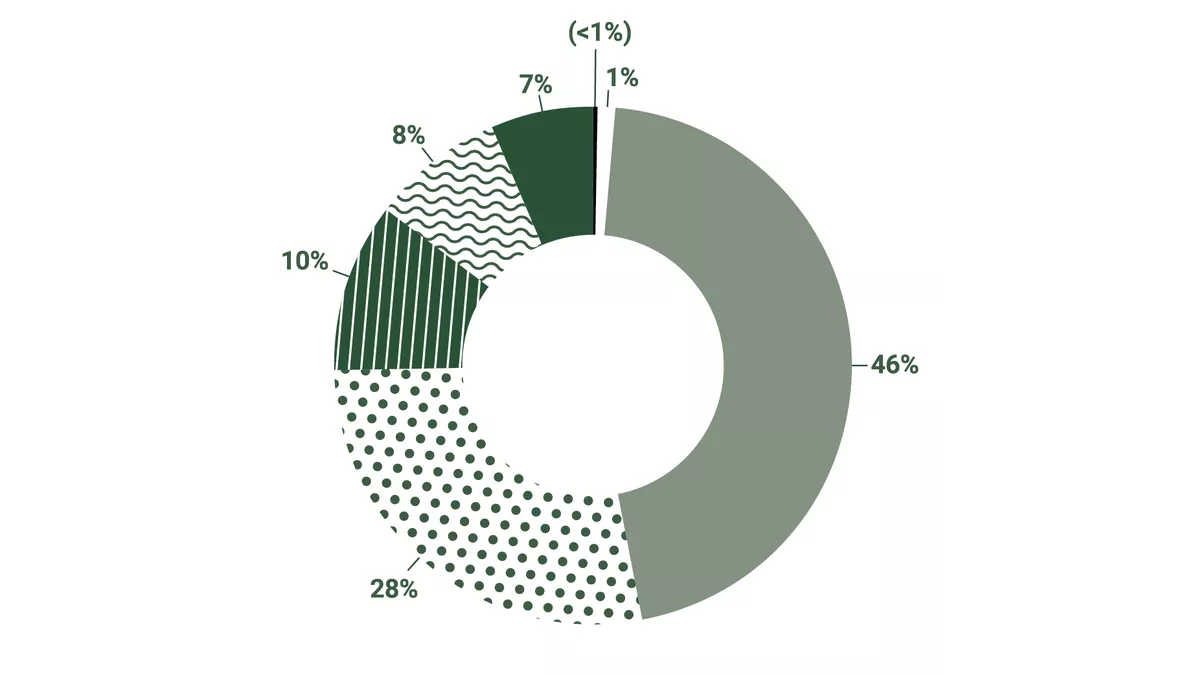
Council emissions over time
Since our baseline year in 2007–08, we’ve tracked our emissions each year. This includes actual emissions and emissions from vehicle use that have been offset by buying Australian Biodiversity Regeneration Offsets.
Greenhouse gas emissions from 2007 to 2014
| Emissions (tonnes CO2) | 2007–08 | 2008–09 | 2009–10 | 2010–11 | 2011–12 | 2012–13 | 2013–14 |
|---|---|---|---|---|---|---|---|
| Actual emissions | 26,509 | 26,316 | 26,803 | 26,130 | 25,156 | 23,865 | 23,605 |
| Offset emissions | 911 | 911 | 860 | 860 | 860 | 860 | |
| Total emissions | 26,509 | 25,405 | 25,892 | 25,270 | 24,296 | 23,005 | 22,745 |
Greenhouse gas emissions from 2014 to 2021
| Emissions (tonnes CO2) | 2014–15 | 2015–16 | 2016–17 | 2017–18 | 2018–19 | 2019–20 | 2020–21 |
|---|---|---|---|---|---|---|---|
| Actual emissions | 23,396 | 22,625 | 22,483 | 22,825 | 21,787 | 17,308 | 4,500 |
| Offset emissions | 2,341 | 2,341 | 2,705 | 2,398 | 2,369 | 2,324 | 2,324 |
| Total emissions | 21,055 | 20,284 | 19,777 | 20,427 | 19,417 | 14,984 | 2,175 |
Community emissions
We sourced information about where emissions in Boroondara come from on the Snapshot database. This database is the most readily available information about community emissions in Victorian Local Government Areas.
The total emissions for Boroondara from January to December 2019 equals 1,804,000 tonnes of CO2-e.
Electricity makes up 58% of emissions in Boroondara.
Gas makes up 19% of emissions in Boroondara.
Transport makes up 20% of emissions in Boroondara.
Waste makes up 3% of emissions in Boroondara.
Other ways to reduce our carbon footprint
It’s important to recognise that our environmental impact is made up of more than our energy use. Decisions we all make every day contribute to our carbon footprint and impact the environment.
These include:
- what we buy and use
- how our food is produced
- how we dispose of things
- the materials used to build our homes, roads and cities.
When we develop any plan or action to support environmental sustainability, we need to think about all of these factors.
Unfortunately, we don’t know what the average individual greenhouse gas emissions in Boroondara is. To find out this information would be difficult, time consuming and expensive. However, we do know that there are many actions we can take as a Council and as a community to reduce our collective impact and create a sustainable, vibrant future.

Pagination links
Council targets
Council targets
Greenhouse gas targets
Most of our electricity now comes from renewable energy. This has been an important factor in reducing our own emissions. Compared to our baseline year in 2007–08, we’ve reduced emissions by more than 80%. One of the best and most cost-effective ways for us to keep reducing our energy use is by continuing to improve our facilities that use renewable electricity. However, these actions won’t be enough to achieve our new emissions targets. We’ll continue to invest in energy efficiency, renewable energy and other local projects and programs that reduce our energy use and emissions.
We have set a target to be carbon-neutral by 2022. We’ll achieve this by investing in greenhouse gas offsets that can be measured and proven. We have set this goal for one year after the adoption of our Climate Action Plan. This will give us enough time to work out the best way to achieve it. As we keep improving our own operations, we won’t need to buy as many offsets. This is because our level of emissions will shrink as we use less greenhouse gases.
Our greenhouse gas targets align with 4 objectives:
- Reduce energy use and pollution.
- Prioritise cleaner energy alternatives.
- Look for cost-effective approaches.
- Look for options that invest locally and offer lasting benefits for Boroondara.
When we set our targets, we thought about:
- what we can achieve
- objectives that’ll continue to push us to do better.
We may not hit every target, but we’ll do more if we have the opportunity. We’ll review our targets as part of an update to the Climate Action Plan in 5 years or sooner if required.
Key targets
We will:
- be carbon-neutral by 2022
- reduce our actual emissions by 90% by 2030 (compared to our baseline year in 2007–08)
- reduce our actual emissions by 100% by 2040 (compared to our baseline year in 2007–08).
Supporting measures
- install more 1MW (megawatt) solar PV (energy captured from solar panels)
- collect 65ML (mega litres) of water from alternative sources per year
- increase the number of street trees from 66,000 to 80,000
- reduce the number of Council buildings that use gas by 50%
- increase the land managed for biodiversity from 51 hectares to 61 hectares
- make sure our vehicle fleet is 90% electric (or other low emissions options).
Pagination links
Community targets
Community targets
Greenhouse gas targets
Local governments don’t have broad legislative or financial control over major community emissions sources. These are mostly controlled by state and federal governments. For example:
- electricity generation and distribution
- transport policy
- planning controls
- agricultural regulations.
We also don’t have much control over taxes, levies or other financial incentives. We have a role in these matters, but we can only be a partner in the solutions. We aren’t able to enforce an outcome.
Our aspirational targets for the Boroondara community will be harder to achieve. They’ll need support from Council and the whole community. They can only be achieved if other levels of government and the Boroondara community are committed to the same path.
We aren’t able to mandate a target like other levels of government. Instead, we’ll partner with the community, businesses and institutions to meet our targets.
Key targets
We have targets for the Boroondara community that are aspirational. These are for our community:
- be carbon-neutral by 2035
- reduce emissions by 60% by 2030 (compared with 2020 emissions)
- reduce emissions by 100% by 2040.
Supporting measures
- support the installation of more 50,000 kw (kilowatt) solar PV (currently 27,000 kw) across Boroondara by tripling the number of buildings with solar energy systems. (this target is for all buildings in Boroondara)
- support residents and schools to plant 50,000 new native plants, including 10,000 trees
- increase the tree cover in Boroondara from 28% to 30%
- make sure there’s a place to charge electric vehicles (EVs) within 2 km of all activity centres
- provide sustainability workshops and education opportunities for 3,000 people each year
- support the community to only use 130 litres of water per person per day
- divert at least 80% of waste from landfill.
Pagination links
Actions and themes
Actions and themes
Key actions
The actions in our Climate Action Plan will set Boroondara on a path to meet our targets.
Some of these actions are ready to roll out, and some need more planning and development. Other actions require new or updated policies to reach our goals and targets.
We have identified these actions as achievable priorities by our community and staff. We have also researched best practises to reduce and adapt to the effects of climate change.
Dependencies and future planning
Some of the actions need commitments from partners. Others depend on technology being available. Our Plan currently shows how we can take those actions when it’s possible. For example, around 8% of our greenhouse gas emissions that come from natural gas are for heating buildings and pools. Another 8% comes from our vehicle fleet, which includes large waste collection vehicles. These percentages come from our baseline year of 2007–08.
Natural Gas reduction
In 2021, 40 % of our emissions came from natural gas usage. We've set a target to halve the number of our buildings that use natural gas by 2030.
Actions
- Support smaller buildings to use electric power.
- Explore ways to support larger buildings and pools to use electric power.
- Consider heat pump technology for larger facilities and aquatic centres.
- Collaborate with other Victorian councils to trial different technologies.
Vehicle Fleet transition
We have set a target to convert 90% of our passenger fleet to electric vehicles (EVs) or other low emissions technology by 2030.
Actions
- Start with light vehicles.
- Gradually include heavier vehicles over time.
- Continue to look for new opportunities to transition larger vehicles.
Collaboration and continuous exploration of new technologies are essential to achieving these targets.
Key themes
Our actions over the 10-year life of the Climate Action Plan are summarised under 5 key themes:
- Energy efficiency and renewable energy
- Biodiversity and trees
- Water and waterways
- Transport
- Circular economy (waste).
We also have overarching actions that affect more than one theme.
Under each theme, the actions are classified as:
- Actions to make Council more sustainable
- Partnership actions
- Actions to adapt to climate change
- Policy and advocacy actions.
These long-term and broad actions will be supported by:
- more detailed actions in the Climate Action Plan Implementation Plan
- strategies that are specific to the themes above
- our annual budget process.

Pagination links
Theme 1: Energy efficiency and renewable energy
Theme 1: Energy efficiency and renewable energy
Actions to make Council more sustainable
1.1 Update and implement our Sustainable Council Building Policy to keep improving our energy use in Council buildings.
1.2 Expand the amount of renewable energy we generate by:
- installing solar PV on all suitable buildings
- installing batteries at suitable locations
- supporting the use of solar PV at other locations.
1.3 Transition Council buildings off natural gas.
1.4 Offset our remaining emissions from 2022.
1.5 Change the rest of our lighting to LED technology.
1.6 Audit our building stock to find more energy efficiency opportunities over time.
1.7 Upgrade major road streetlights to LED (subject to Victorian Government co-funding and an updated business case).
1.8 Transition our small machines to electric-powered alternatives.

Partnership actions
1.9 Implement a community solar PV, battery and energy efficiency bulk buy program.
1.10 Help large energy users to switch to renewable energy via a Power Purchase Agreement or other way.
1.11 Give advice and support to encourage Environmentally Sustainable Design standards in building, renovation and development (as well as requirements of Planning Scheme and Building Regulations).
1.12 Deliver energy efficiency workshops, advice and support programs for community and businesses.
1.13 Support businesses to reduce the environmental impact of their operations.
1.14 Encourage community to offset emissions.
1.15 Develop a program to support energy efficiency and renewable energy upgrades for Boroondara homes and businesses.
Actions to adapt to climate change
1.16 Maintain an Emergency Management Plan that considers the likely effects of climate change.
1.17 Improve the Environmentally Sustainable Design in our buildings over time.
1.18 Promote the benefits of cool roofs.
1.19 Support vulnerable and low-income residents to upgrade home energy efficiency.
Policy and advocacy actions
1.20 Support more Environmentally Sustainable Design in our Planning Scheme through our policies and advocacy.
1.21 Advocate for better environmental sustainability standards for new commercial and residential developments.
1.22 Advocate for the Victorian Government and Federal Government to adopt ambitious emission targets.
1.23 Develop a Natural Gas Transition Plan to support the use of low-emissions alternatives to natural gas at our buildings.
Download more on our future actions
Pagination links
Theme 2: Biodiversity and trees
Theme 2: Biodiversity and trees
Actions to make Council more sustainable
2.1 Increase the area managed for biodiversity from 51 hectares to 61 hectares.
2.2 Improve the local habitat for biodiversity.
2.3 Improve our tree planting program to provide more tree cover and urban cooling. We also want to make sure they are resilient and future-proofed.
Partnership actions
2.4 Give trees to schools, community groups and residents.
2.5 Deliver education workshops and programs that teach our community about protecting and improving our biodiversity.
Actions to adapt to climate change
2.6 Include climate change criteria in our tree renewal and plant selection guidelines.
2.7 Deliver a program that aims to restore our habitat and install nest boxes.
2.8 Provide support for increasing the number of canopy trees and shade to reduce urban heat.
2.9 Increase the open space in gap areas where open space is limited.
2.10 Review the Nature strip Guidelines to help people use these spaces.
Policy and advocacy actions
2.11 Develop an Urban Forest and Urban Greening Strategy for Boroondara with a related planting plan.
2.12 Expand and put in place policies to protect trees on private land.
2.13 Advocate to the Victorian Government to improve tree protection on private land.
2.14 Expand and enforce tree protection rules for developers.
2.15 Update the Boroondara Open Space Strategy.
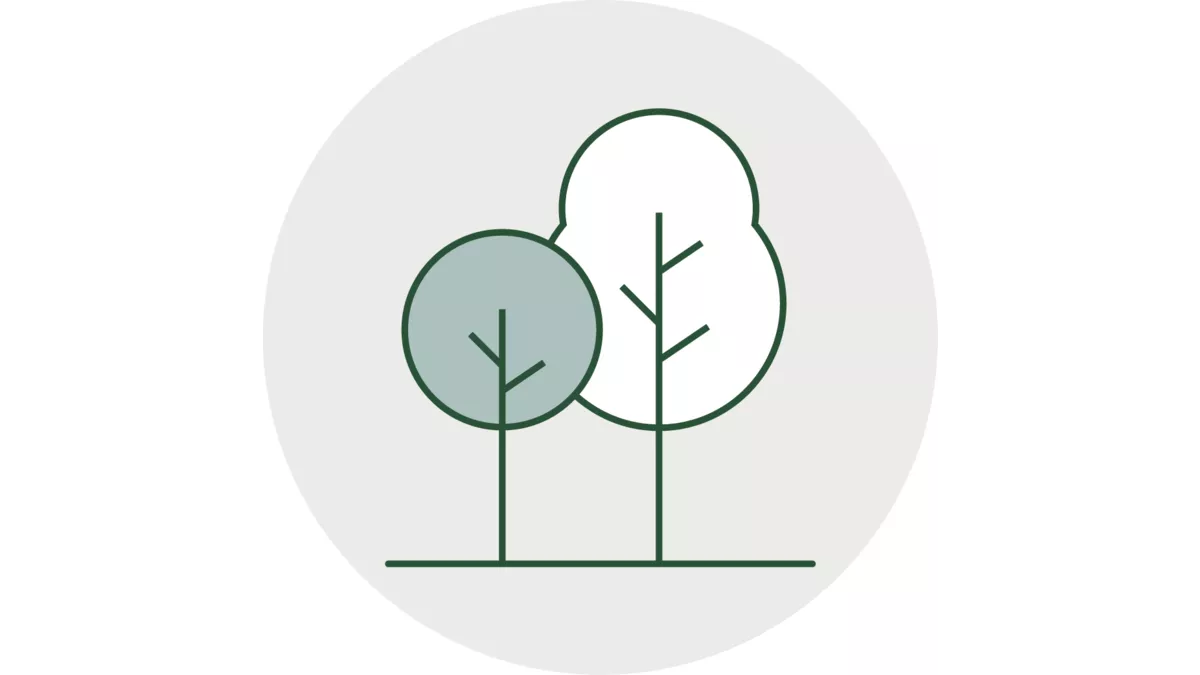
Download more on our future actions
Pagination links
Theme 3: Water and waterways
Theme 3: Water and waterways
Actions to make Council more sustainable
3.1 Update and implement our Sustainable Council Building Policy to make the water use at our buildings more efficient over time.
3.2 Increase the amount of water we collect from other sources at our buildings, parks and sports grounds.
3.3 Develop a new Integrated Water Management infrastructure program. This will be a plan to develop and implement new projects, such as stormwater treatment, litter management and collecting water from other sources and reusing it.
Partnership actions
3.4 Deliver sustainability workshops to teach the community about using water sustainably.
3.5 Provide support programs and advice for businesses to help them use less water.
3.6 Develop a cleaner building site program that will target sediment runoff from development sites. Develop an engagement and enforcement program for the cleaner building site program.
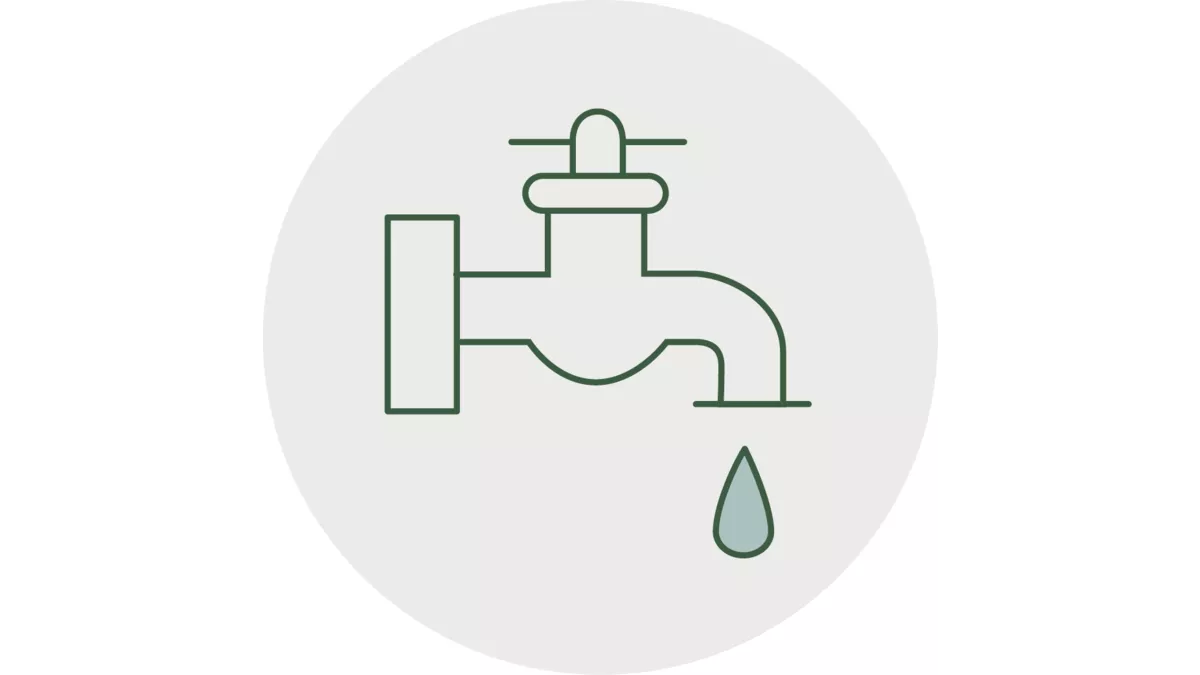
Actions to adapt to climate change
3.7 Increase the amount of water we collect from other sources, such as rainwater, and support people to use less water. This will reduce our need for mains water.
3.8 Update and implement our Integrated Water Management Plan.
3.9 Build the capacity of our infrastructure, such as buildings and drains, to withstand storm and flooding events.
Policy and advocacy actions
3.10 Maintain an Integrated Water Management Strategy and Action Plan for Boroondara.
3.11 Implement and promote actions to reduce urban stormwater runoff
3.12 Make sure building sites are managed well and are taking care to avoid pollution going into our waterways.
3.13 Develop a winter irrigation strategy for Boroondara.
3.14 Develop and implement updated soil management and irrigation management plans for a healthier open space.
Download more on our future actions
Pagination links
Theme 4: Transport
Theme 4: Transport
Actions to make Council more sustainable
4.1 Reduce the total number of vehicles in our fleet and speed up the transition to electric-powered or other low-emissions options.
4.2 Find and set aside land for fast charging stations, including car-sharing models.
4.3 Look for ways to include electric vehicle and bicycle charging in all relevant Council civil works.
4.4 Support flexible working options for Council staff to reduce the number of trips by motor vehicles.
4.5 Ask contractors to use low-emission vehicles as much as possible in new contracts.
Partnership actions
4.6 Promote sustainability programs and events to encourage more sustainable types of transport.
4.7 Support the installation of electric vehicle and bicycle chargers.
4.8 Support improved off-road, shared or separated bicycle and pedestrian paths.
4.9 Connect the off-road cycling network through new links (on and off-road). This includes improved crossing facilities on main and local roads.
4.10 Explore options for more on-road bike lane facilities.
4.11 Create and improve walking routes to transport hubs.
4.12 Deliver a range of sustainable transport events and programs for schools.
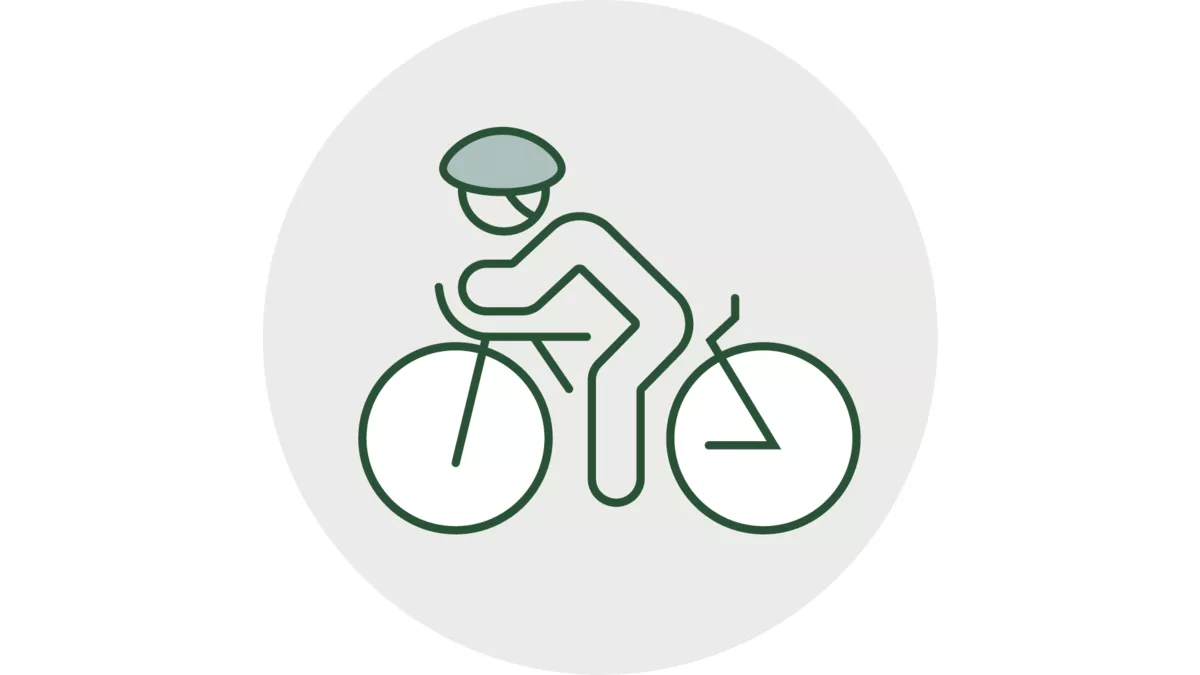
Actions to adapt to climate change
4.13 Implement our Shade Policy and look for opportunities to improve the shade on walking routes.
4.14 Install lighting for shared paths, as well as paths in reserves and parks to encourage walking and cycling. We’ll also think about the effects of light pollution.
Policy and advocacy actions
4.15 Review and update our Integrated Transport Strategy.
4.16 Develop a Bicycle Strategy.
4.17 Develop a Public Transport Strategy.
4.18 Advocate for freight emissions to be reduced. This includes offering incentives for electric trucks and anti-idling.
4.19 Advocate for all Victorian transport projects to provide ready-to-use electric vehicle and bicycle charging infrastructure.
4.20 Advocate for fast charging in service stations.
4.21 Review our Car Share Policy and Procedures to provide support for sustainable transport.
4.22 Advocate for more tram stops to be built that are in an appropriate location and comply with the Disability Discrimination Act 1992.
4.23 Support local business hubs that help reduce commuter travel.
4.24 Develop a Council Fleet Transition Plan to support more use of low-emissions vehicles by Council.
Download more on our future actions
Pagination links
Theme 5: Circular economy
Theme 5: Circular economy
Actions to make Council more sustainable
5.1 Increase recycling options available to the Boroondara community and support new recycling options for items such as solar PV panels.
5.2 Increase the use of recycled materials in our projects and work.
5.3 Get rid of any non-essential, single-use plastics at events managed and sponsored by Council.
5.4 Explore opportunities to use FOGO compost in our open spaces and parks.
5.5 Look for opportunities to expand the FOGO program.
Partnership actions
5.6 Deliver workshops and support for:
- using more recycled materials
- reducing food waste
- more composting.
5.7 Deliver business-focused programs to:
- reduce food waste
- reduce packaging waste.

Actions to adapt to climate change
5.8 Support more home food gardening, as well as community gardening and composting.
5.9 Explore options for waste disposal other than landfill
Policy and advocacy actions
5.10 Develop a Circular Economy Strategy for Boroondara to replace the current Waste Minimisation and Recycling Strategy.
5.11 Advocate for greater environmental sustainability in the National Construction Code.
Download more on our future actions
Pagination links
Overarching actions
Overarching actions
Actions to make Council more sustainable
6.1 Report every year on our climate action performance.
6.2 Include climate action education as part of our staff induction.
6.3 Increase funding for climate action grants as part of our grant program.
6.4 Promote the actions we take on climate change and the benefits of community actions.
6.5 Include climate action into staff roles, responsibilities and performance management.
6.6 Work with other councils to increase our impact.
6.7 Introduce short-term targets that match the ones set by the Victorian Government and the Federal Government.
6.8 Consider environmental sustainability in our investment decisions.
6.9 Look for opportunities to use smart technologies and IOT (Internet of Things) to achieve environmental sustainability.
6.10 Provide training and resources for Councillors about climate change and other Boroondara sustainability issues.

Partnership actions
6.11 Provide workshop programs and sustainability festivals.
6.12 Provide regular sustainability education and advice through our communication channels, including the Boroondara Bulletin.
6.13 Support more sustainability measures through the planning permit process. This includes creating a new Environmentally Sustainable Development Planning Officer position at Council.
6.14 Help develop an Environmentally Sustainable Development policy to include in the Boroondara Planning Scheme. This will be part of our membership in the Council Alliance for a Sustainable Built Environment (CASBE).
6.15 Provide a program of sustainability support and advice for schools and young people.
Actions to adapt to climate change
6.16 Develop options for the use of alternative permeable and heat-reducing surfaces in roadways and pathways.
6.17 Develop a Climate Action Plan and Risk Management Strategy for Boroondara.
6.18 Implement actions to respond to climate change risks for Boroondara.
Policy and advocacy actions
6.19 Update our Procurement Policy and make sure it emphasises sustainability.
6.20 Develop a Litter and Pollution Reduction Plan for Boroondara.
6.21 Consider climate change impacts in relevant reports and decision-making.
6.22 Include climate action into all our new and revised policies, processes and strategies.
6.23 Advocate for and support more Environmentally Sustainable Development through the planning scheme.
6.24 Look for ways to improve air quality in Boroondara, such as anti-idling education around schools.
6.25 Look for ways to improve how we collect and monitor data for reporting on climate actions and impacts.
6.26 Advocate to other levels of government and relevant agencies to provide funding for Local Government Authorities and communities to take action to respond to climate change.
Download more on our future actions
Pagination links
How this plan links to other work and policies
How this plan links to other work and policies
The broad nature and impact of climate change means that it’s not possible to include all actions in a single document.
The Climate Action Plan will be supported by a range of other specific strategic documents, as outlined below. Some of these strategies already exist. Other strategies will be developed or refreshed as part of the actions of this plan.
Our Boroondara Community Plan includes the Health and Wellbeing Plan, which must respond to climate change under the Local Government Act 2020.
Strategic links will include:
- Urban Forest Strategy (new strategy as an action of this plan)
- Open Space Strategy
- Integrated Water Management Strategy
- Urban Biodiversity Strategy
- Sustainable Transport Policy
- Public Lighting Policy (refresh of our current policy to include sustainability)
- Sustainable Procurement (refresh of our current policy to better include sustainability)
- Council Fleet Policy (refresh of our current policy to better include sustainability)
- Circular Economy Strategy (refresh of our Waste Minimisation and Recycling Strategy)
- Climate Change Adaptation Plan (new strategy as an action of this plan)
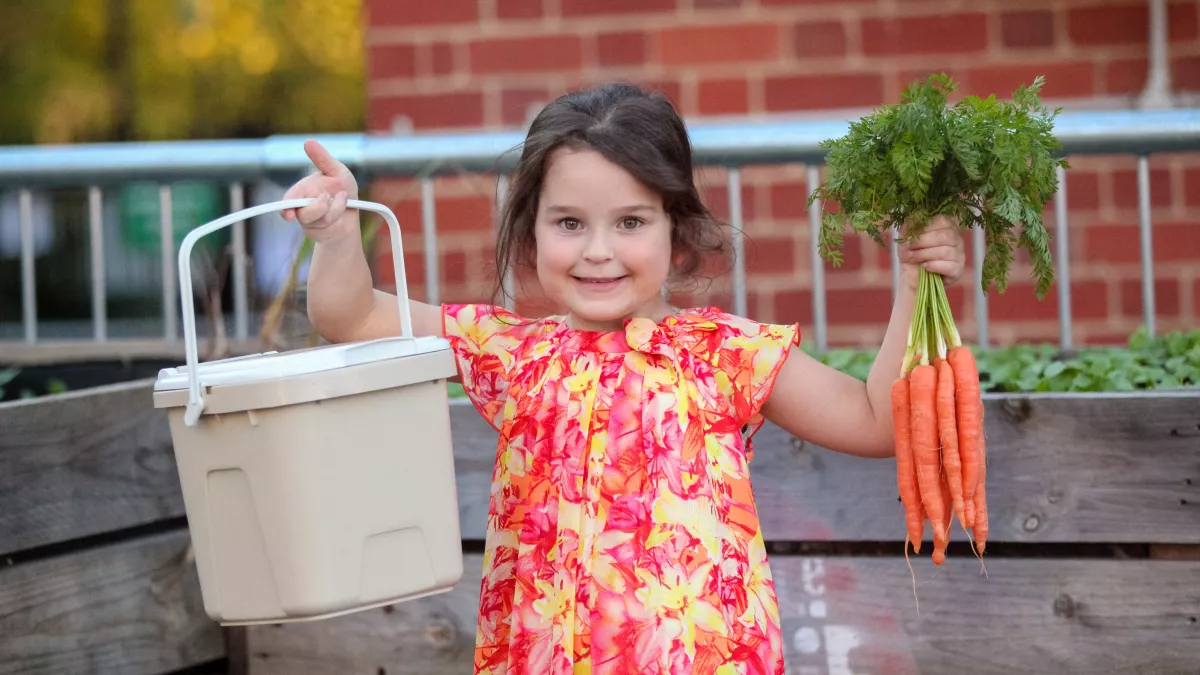
Pagination links
Monitoring and reporting on our actions
Monitoring and reporting on our actions
Our monitoring and reporting each year will include:
- our greenhouse gas emissions
- a snapshot of emissions from the community
- waste, recycling and FOGO data
- tree planting and renewal data
- data on our water use and how we are collecting it from other sources
- our biodiversity actions
- information on our workshops and community support programs.
We’ll review and update the Climate Action Plan in 5 years. We’ll also review and update the Implementation Plan every 2 years. These updates will include a community check-in survey.

Pagination links
Community ideas for future action plans
Community ideas for future action plans
During our consultation and planning for the Climate Action Plan, we received many ideas and suggestions from the Boroondara community, Council staff and technical experts.
Not all of these ideas could make it into the plan. We have included some, but others:
- need more investigation and planning
- have been tried before
- are being tried by other Councils
- aren’t a priority for us right now.
Whether these suggestions can be actioned or not, they are all worth recording for us to consider in the future.

Community ideas
- Adapt infrastructure to climate change
- Backyard chickens
- Buying from bulk food shops
- Buying second-hand
- Clean up our local waterways
- Councillors and Council staff should use sustainable transport
- Declare a climate emergency
- Divest from fossil fuels
- Dog poo composting
- Efficient glazing
- Energy-efficient public lighting
- Expand FOGO
- Get rid of all plastic bags
- Growing our own fruit and vegetables
- Household batteries
- Increase permeable surfaces
- Keep cats inside at night
- LED lighting
- Less fast fashion
- More community gardens
- More focus on good building design
- More nesting boxes for biodiversity
- More sharing, sharing cafes
- More sustainable planning and building controls
- Plant suitable trees for the location
- Plant native gardens
- Promote Clean Up Australia Day
- Reduce air travel
- Reduce chemical and other pollution
- Reduce concrete use
- Reduce meat consumption
- Reduce the use of gas
- Repair broken items
- Simplify recycling
- Support a container deposit scheme
- Support bees and insects
- Support cycling
- Support edible plants on nature strips
- Support for apartment dwellers
- Support for renters
- Support schools and students
- Undertake cost benefit analysis before making decisions
- Use more renewable energy
- Using grey water
- Worm farms and home composting.